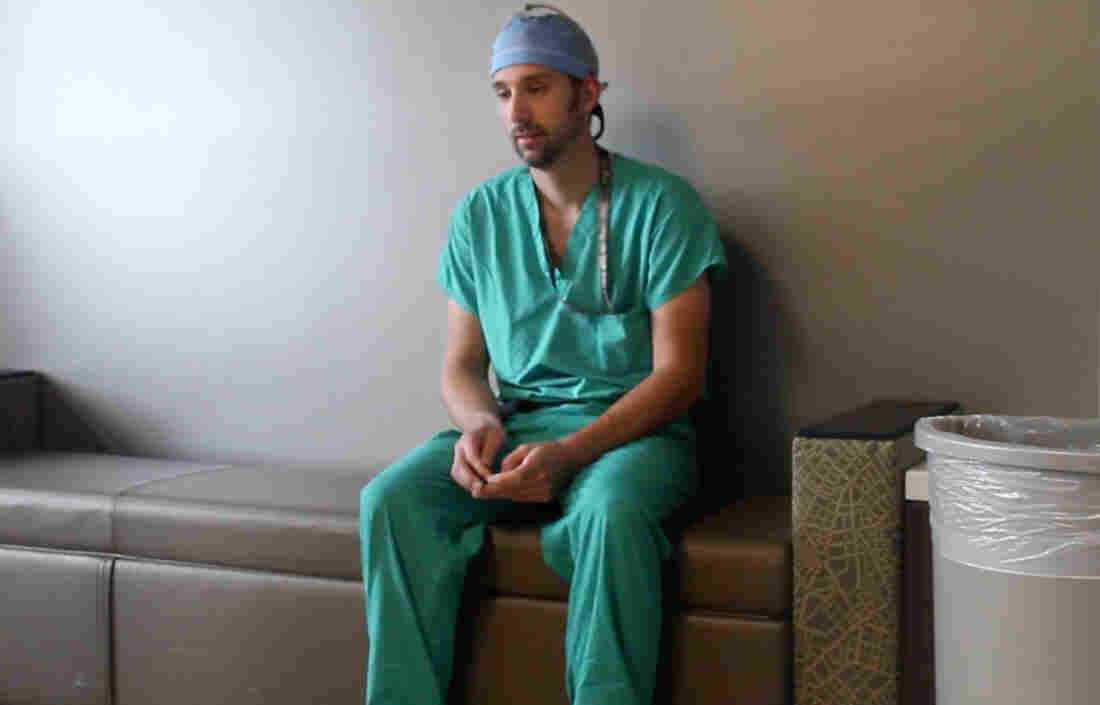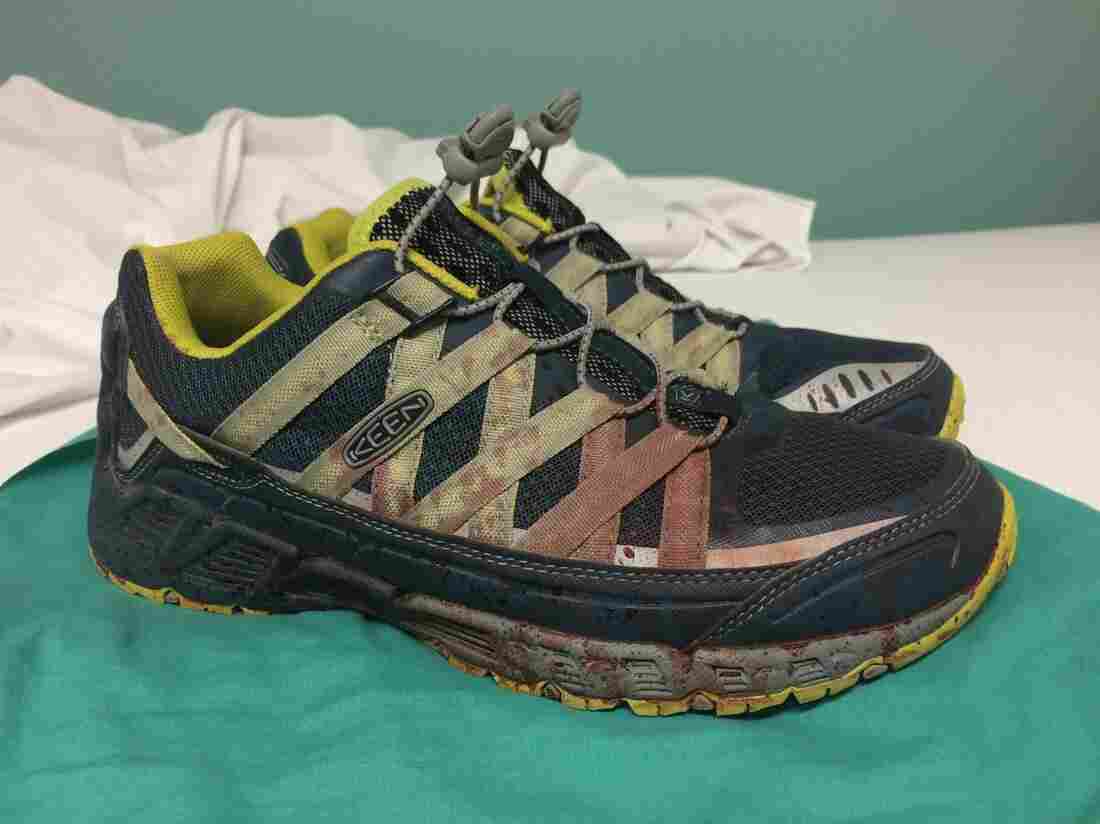The Text4Baby app sends free, periodic text messages in Spanish or English to pregnant women and new moms about prenatal care, labor and delivery, breastfeeding, developmental milestones and immunizations. Kristin Adair/NPR hide caption
toggle caption Kristin Adair/NPR
When you hear the phrase “digital health,” you might think about a Fitbit, the healthy eating app on your smartphone, or maybe a new way to email the doctor.
But Fitbits aren’t particularly useful if you’re homeless, and the nutrition app won’t mean much to someone who struggles to pay for groceries. Same for emailing your doctor if you don’t have a doctor or reliable Internet access.
“There is a disconnect between the problems of those who need the most help and the tech solutions they are being offered,” said Veenu Aulakh, executive director of the Center for Care Innovations, an Oakland, Calif.-based nonprofit that works to improve health care for underserved patients.
At most digital health “pitchfests,” it’s pretty much white millennials hawking their technology to potential investors. “It’s about the shiny new object that really is targeted at solving problems for wealthy individuals, the ‘quantified-self’ people who already track their health,” Aulakh said. “Yet ….What if we could harness the energy of the larger innovation sector for some of these really critical issues facing vulnerable populations in this country?”
A small but growing effort is underway to do just that. It’s aimed at using digital technologies – particularly cellphones – to improve the health of Americans who live on the margins. They may be poor, homeless or have trouble getting or paying for medical care even when they have insurance.
The initiatives are gaining traction partly because of the growing use of mobile phones, particularly by lower-income people who may have little other access to the Internet.
The Affordable Care Act and the expansion of Medicaid have added millions of previously uninsured people to the nation’s health care system, including community health clinics that serve poor and largely minority populations, according to a California Health Care Foundation report. (California Healthline is an editorially independent publication of the California Health Care Foundation.)
In California alone, the number of people on Medi-Cal, the state’s version of the Medicaid program for the poor, rose from 7.5 million in 2010 to 12.4 million by early 2015. Many Americans remain uninsured, however, because they live in states that have declined to expand Medicaid eligibility.
Health advocates say it’s important to tailor digital health technologies to lower-income people not only to be fair, but because they’re more likely to have chronic illnesses, like diabetes, that are expensive to treat.
Health-care providers have incentives as well. They are being rewarded financially under the Affordable Care Act, Medicare and Medicaid for keeping patients healthy, and this goes beyond simply performing medical procedures and prescribing drugs.
For now, experiments targeting low-income people are a tiny part of the digital health industry, which racked up an estimated $4.5 billion in venture funding in 2015 alone. Entrepreneurs are still trying to figure out how they’re going to get paid by serving this population, and government health programs like Medicaid and Medicare are taking a while to figure out how they’re going to pay providers for approaches that don’t involve a doctors’ visit.
But Jane Sarasohn-Kahn, author of the California Health Care Foundation report, says investors are getting more interested in digital health initiatives for low-income patients simply because there are so many of them.
Investors are eyeing the “fortune at the bottom of the pyramid,” she said, much as Walmart profits from selling low-priced items to millions.
“It’s now sexy to scale,” she says. “If you can have impact [on many people], inexpensively, you can make a lot of money. If we get it right, we can do well and do good.”
Some initiatives are simple and cheap, like Text4Baby. The free text-messaging service for pregnant women and new moms offers information in English and Spanish about prenatal care, labor and delivery, breastfeeding, developmental milestones, and immunizations. The specific texts are timed to the baby’s due date.
Operated by the nonprofit ZERO TO THREE and the mobile health company Voxiva, Inc., Text4Baby has reached nearly 1 million women since starting in 2010. In one survey, more than half of them reported yearly incomes of less than $16,000.
Other experiments are far more elaborate. In California and Washington state, San Francisco-based Omada Health is testing a version of Prevent, a diabetes and heart disease prevention program that’s been modified for “underserved” populations – basically people on Medicaid or who are uninsured. The free program offers patients a digital scale as well as behavior counseling and education, access to a personal health coach and an online peer network.
To adapt the program, the company made it available in Spanish and English and lowered its reading level from ninth grade to fifth grade. Bilingual health coaches were hired, and the educational materials now acknowledge potential food access, neighborhood safety and economic issues that participants may face, said Eliza Gibson, Omada’s director of Medicaid and safety-net commercial development.
The scale doesn’t require a wireless connection, and the patient just needs to be able to access the Internet for one hour each week, Gibson said.
Omada is enrolling 300 community clinic patients in Southern California and rural Washington in a year-long clinical trial of Prevent, in hopes that the program can demonstrably slow the progress of diabetes.
Patients at other community clinics in California will try out the program but won’t be included in the clinical trial, Gibson said. Omada Health is also offering a version called Prevent for Underserved Populations that specifically targets low-income community clinic patients.
Among the people trying out the program is Susy Navarro, an elementary school substitute teacher who lives in the Spring Valley community east of San Diego. After being diagnosed with prediabetes, Navarro, 28, set an ambitious goal to lose 100 pounds. In the meantime, she is taking medication to stave off Type 2 diabetes.
“You name it, I’ve probably tried it – Weight Watchers, low-fat, low carb, pills, injections, acupuncture,” Navarro said. “The first time I try things it goes very well, I feel like I’m very successful, then I wean off and I’m not successful. This program focuses more on life choices that are going to help us out long-term, not just for a little bit.”
Navarro described the scale she was given as “sophisticated looking – all black, flat, digital.” It has been programmed to her weight profile (she is considered obese), and transmits her weight every morning to the program’s counselors.
The program, with its daily weigh-ins, helps her pay attention to what she eats, and her blood sugar levels are declining, Navarro said. She also appreciates the ability to connect online with fellow patients on her “team.” “It’s very awesome – you get to know the other members and feel like it’s a team effort.”
As they continue to explore digital health possibilities for underserved patients, developers are learning more about what works and what doesn’t, says Sarasohn-Kahn. For example, apps chew up a lot of cellphone data, so many community clinic patients prefer lower-cost text messaging.
At the Petaluma Health Center, a network of community clinics in Sonoma County, Calif., staffers offered free, simplified “loaner” digital devices to patients after a hospital stay to help them avoid complications that could land them back in the hospital.
They first offered an Android tablet to allow for a video visit with a health professional, but patients were reluctant to take it, saying it was hard to hide and could be stolen, said Dr. Danielle Oryn, the network’s chief medical information officer.
Then they tried iPhones, in which everything was locked down except the ability to call 911 and a single button triggering the video visit. Those were more acceptable. Still, there were challenges. Would patients, some recuperating at homeless shelters, have access to electricity to charge their phones? Oryn said they had to learn by trial and error. She was surprised and pleased to see seniors accepting the technology. Every loaner iPhone was returned to the clinic.
Oryn’s advice to the captains of the digital health industry?
They should “not necessarily come in with too many assumptions. They should come with an open mind and a willingness to listen,” Oryn said. “Safety-net people are very excited to have these companies interested in them and to share their experiences.”
This story was produced by Kaiser Health News, which publishes California Healthline, a service of the California Health Care Foundation. Follow Barbara Feder Ostrov on Twitter: @barbfederostrov.
Let’s block ads! (Why?)







